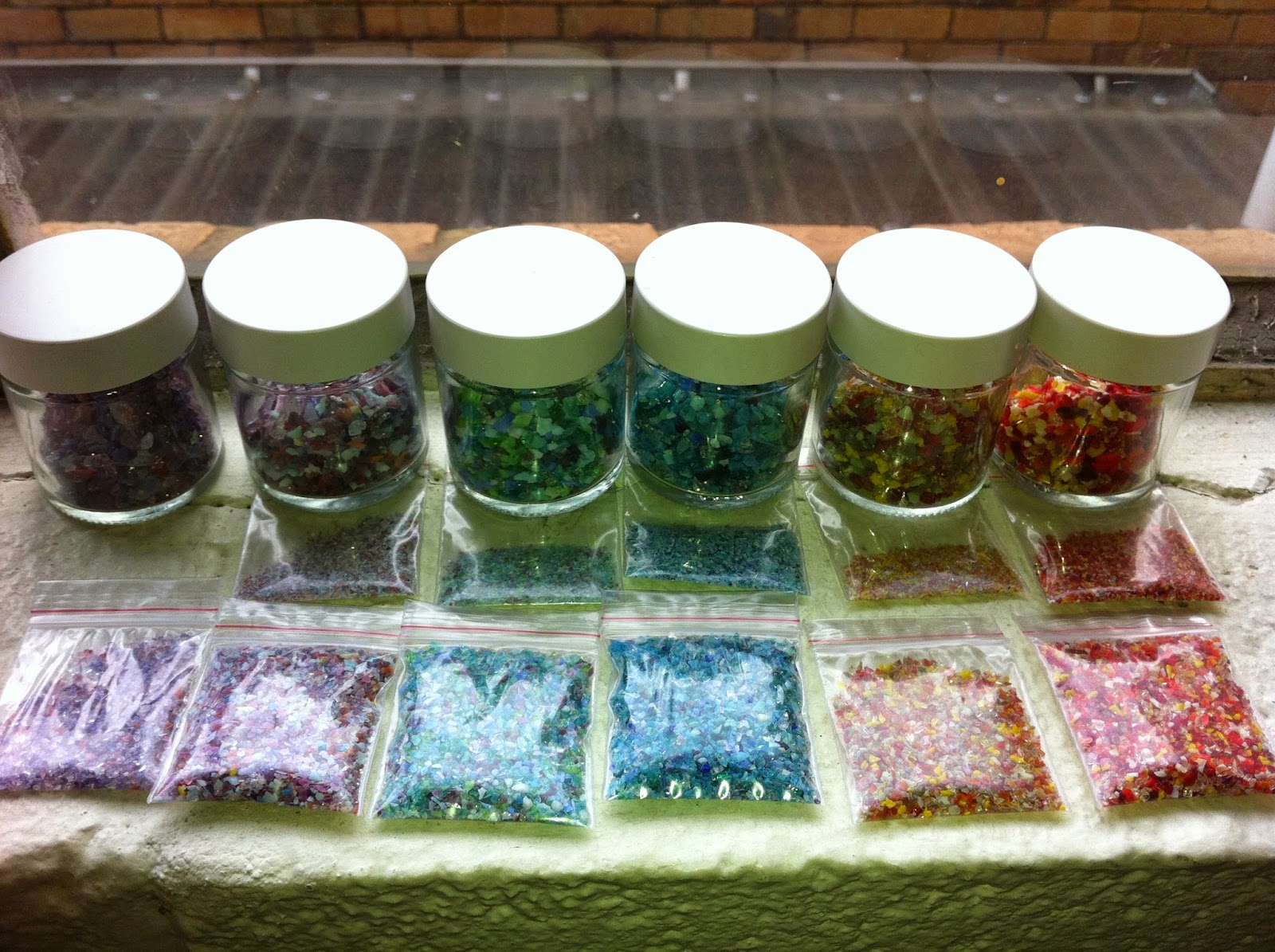Vent
holes in moulds will prevent big bubbles
The big bubbles found in slumped pieces are normally
between the bottom of the glass and the mould at some place near the lowest
part of the mould. The idea behind the
myth seems to be that the air space between the mould and the suspended glass
will be trapped and so cause the bubble.
In thinking about how likely this is, look at when bubbles
are formed in flat pieces. This occurs
at tack fusing temperatures and above.
Applied to slumping which occurs at lower temperatures, it shows that
the glass is unlikely to be plastic enough to allow large bubble formation from
heat alone.
Of course, this assertion assumes some things.
- You need have vent holes in the area where the glass will last touch down. Their placing will depend on the shape of the mould.
- The vent holes in the bottom of the mould should be clear, with holes in the side or supported on pieces of 1mm or thicker fibre paper to allow the air from under the mould.
- You should be advancing in temperature at a moderate and steady rate. Fast rates are likely to cause the edge to conform to the mould and close any air escape through the perimeter.
Large bubbles
at the bottom of slumps are most often the result of a too high a temperature
or too long a soak or a combination of the two.
A high temperature will allow the glass to continue to move. As the glass is not plastic enough to
thicken, the weight of glass higher in the mould causes the glass at the bottom
to rise up in a bubble-like form. If the
slump is at a moderate temperature, but with a very long soak, the same result
will be observed.
This means
that prevention of large bubbles is by
observation. When using new moulds
or new layups for the glass, you should observe the progress of the slump from
the softening point upwards and through the soak. This observation should be by quick peeks at
regular intervals and recording the results at each peek. This will tell you the temperature at which
the slump is complete.
If you find
that the slump is complete before the set top temperature, or in the early part
of the slump, the target temperature is too high. In a subsequent firing, reduce the
temperature while keeping a half hour soak.
Repeat this until you have a complete slump in that time. If the reverse is true, increase the
temperature until the slump is complete in the half hour.
In conclusion,
prevention of big bubbles is a combination of elements.
·
Make
sure there are vent holes in the mould,
·
Make
sure the air can get from under the mould,
·
Use
a moderate rate of advance, and finally
·
Use
the minimum temperature possible to achieve a complete slump in half an hour or a little more.
All myths have an element of truth
in them otherwise they would not persist.
They also persist because people
listen to the “rules” rather than thinking about the principles and applying
them. It is when you understand the
principles that you can successfully break the “rules”.





















